Click here and press the right key for the next slide (or swipe left)
also ...
Press the left key to go backwards (or swipe right)
Press n to toggle whether notes are shown (or add '?notes' to the url before the #)
Press m or double tap to slide thumbnails (menu)
Press ? at any time to show the keyboard shortcuts

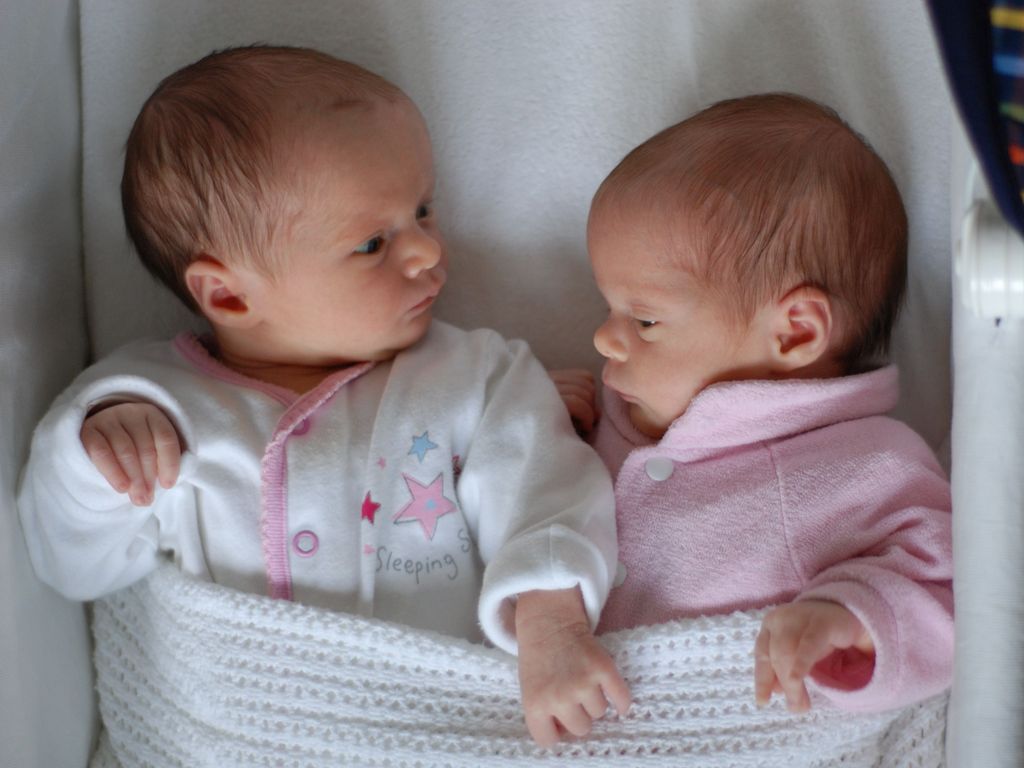
Origins of Mind : 04
question
a challenge
plan
objects
causes
colours
words
non-verbal communications
minds
actions
When do humans first come to know facts about the locations of objects they are not perceiving?
look: by 4 months of age or earlier (Baillargeon 1987).
look: by around 2.5 months of age or earlier(Aguiar & Baillargeon 1999)
search: not until after 7 months of age (Shinskey & Munakata 2001)
‘action demands are not the only cause of failures on occlusion tasks’
Shinskey (2012, p. 291)
‘the tip of an iceberg’ Charles & Rivera (2009, p. 994)
Uncomplicated Account of Minds and Actions
For any given proposition [There’s a spider behind the book] and any given human [Wy] ...
1. Either Wy knows that there’s a spider behind the book, or she does not.
2. Either Wy can act for the reason that there is, or seems to be, a spider behind the book (where this is her reason for acting), or else she cannot.
3. The first alternatives of (1) and (2) are either both true or both false.
lots of evidence

Three Abilities to Underpin Knowledge of Objects
knowledge of physical objects
objects
have boundaries
persist through time
causally interact
knowledge of objects
involves
segmenting them
representing them as perstising
tracking their causal interactions
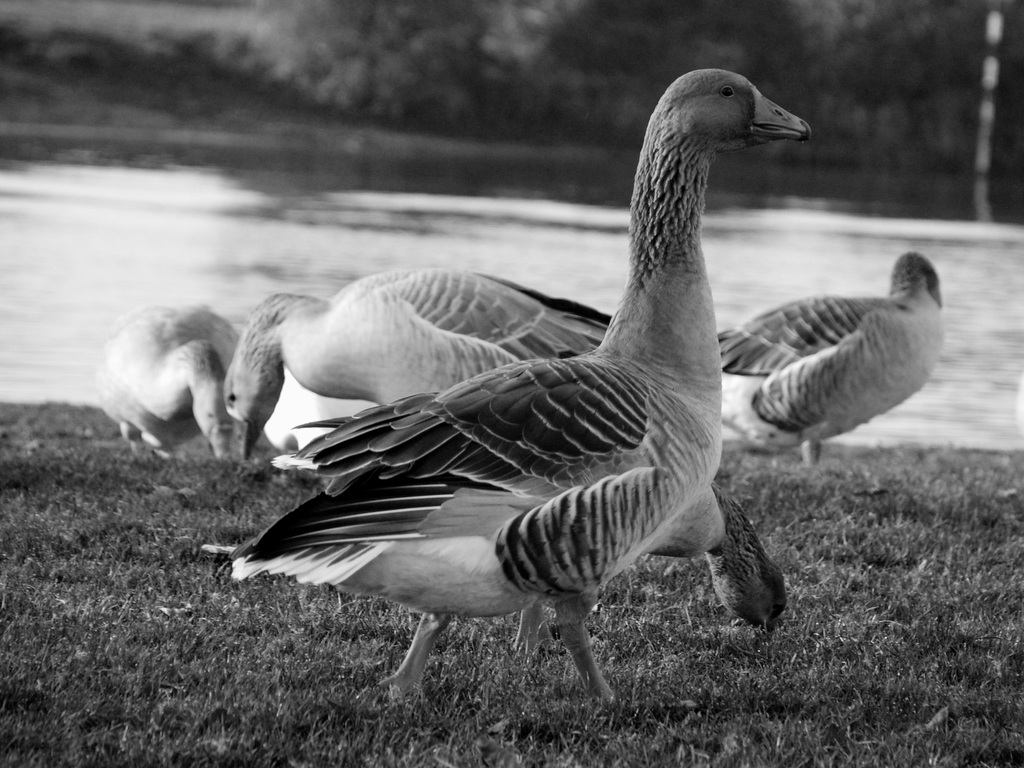
objects
have boundaries
persist through time
causally interact
knowledge of objects
involves
segmenting them
representing them as perstising
tracking their causal interactions

objects
have boundaries
persist through time
causally interact
knowledge of objects
involves
segmenting them
representing them as perstising
tracking their causal interactions

objects
have boundaries
persist through time
causally interact
knowledge of objects
involves
segmenting them
representing them as perstising
tracking their causal interactions
the question

Segmentation and the Principles of Object Perception
first requirement: segmentation

using featural information
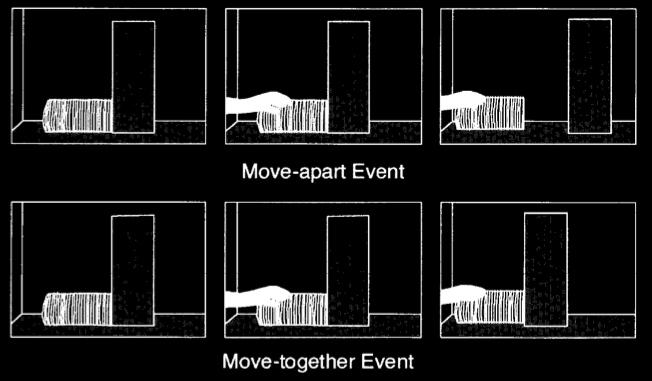
Needham (1998)
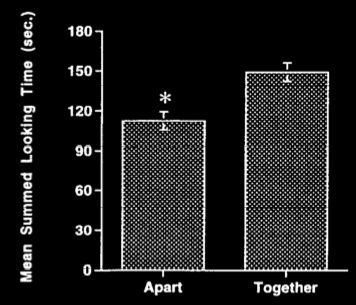
Needham (1998, figure 4)
method
violation-of-expectations
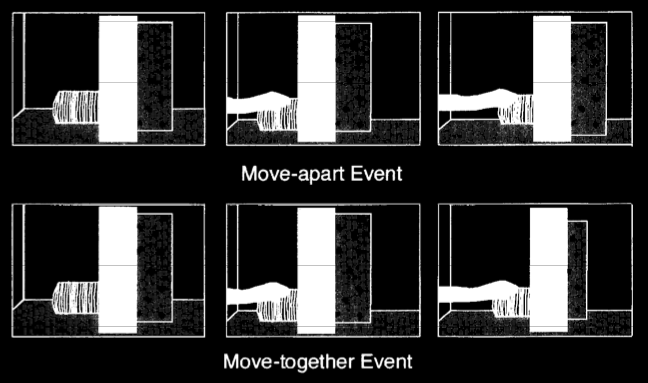
Needham (1998, figure 6)
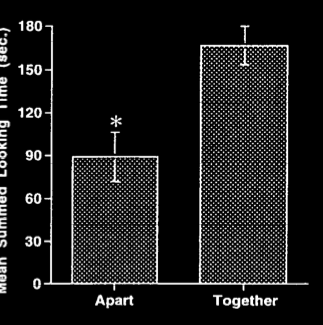
Needham (1998, figure 7)
Could it all be features?

Spelke (1990, figure 2)
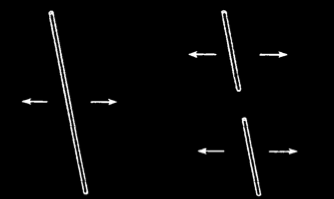
Kellman & Spelke (1983, figure 3)
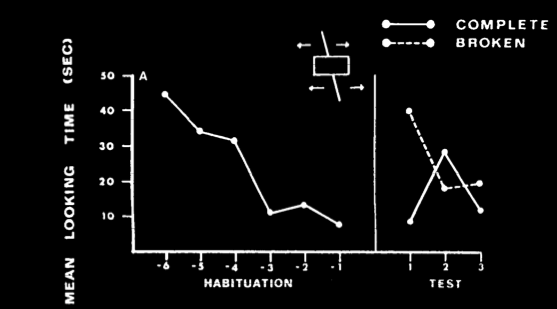
Kellman & Spelke (1983, figure 4)
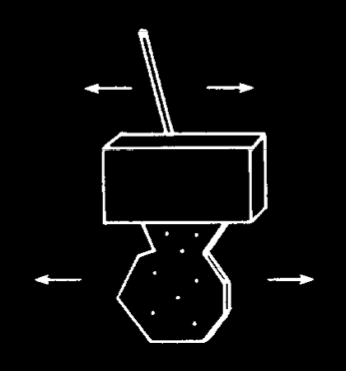
Kellman & Spelke (1983, figure 13)
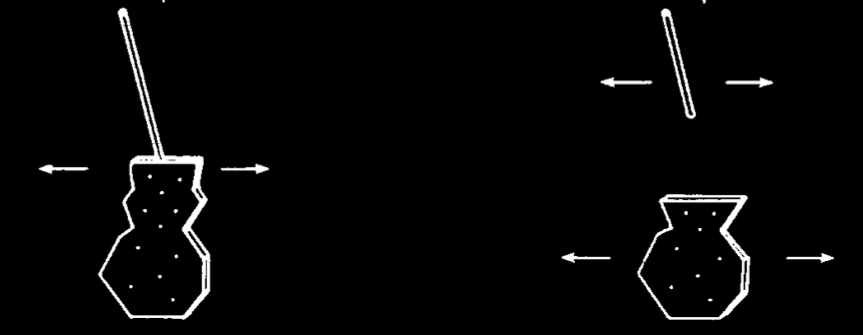
Kellman & Spelke (1983, figure 13)
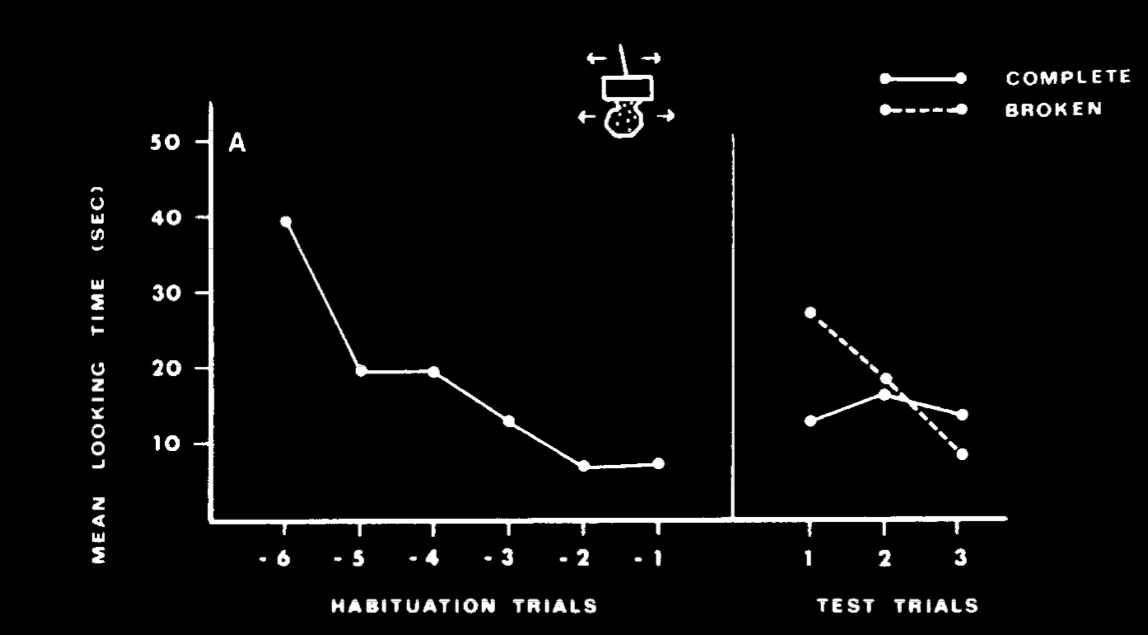
Kellman & Spelke (1983, figure 14)
If not by features, then how? Principles!\citet{Spelke:1990jn} suggests that infants rely on a set of principles to segment objects. But what are the principles?

Kellman & Spelke (1983, figure 13)
rigidity—‘objects are interpreted as moving rigidly if such an interpretation exists’
cohesion—‘two surface points lie on the same object only if the points are linked by a path of connected surface points’
(Spelke 1990)
cohesion:
‘two surface points lie on the same object only if the points are linked by a path of connected surface points’
(Spelke 1990)
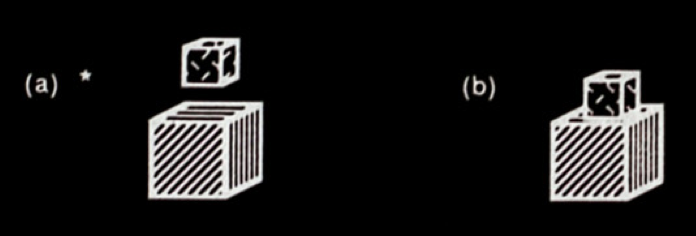

Spelke (1990, figure 4)
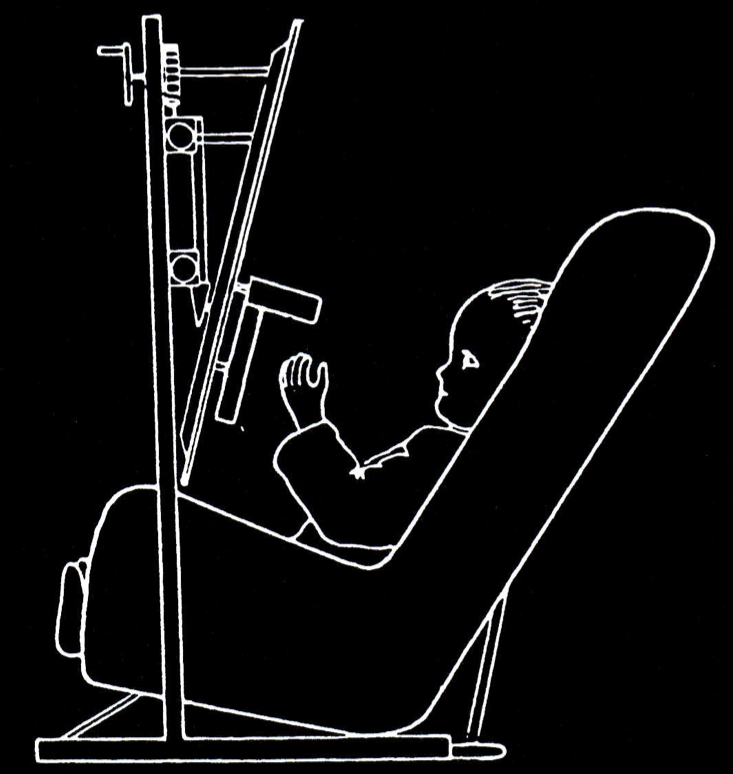
Spelke et al 1989 figure 1.
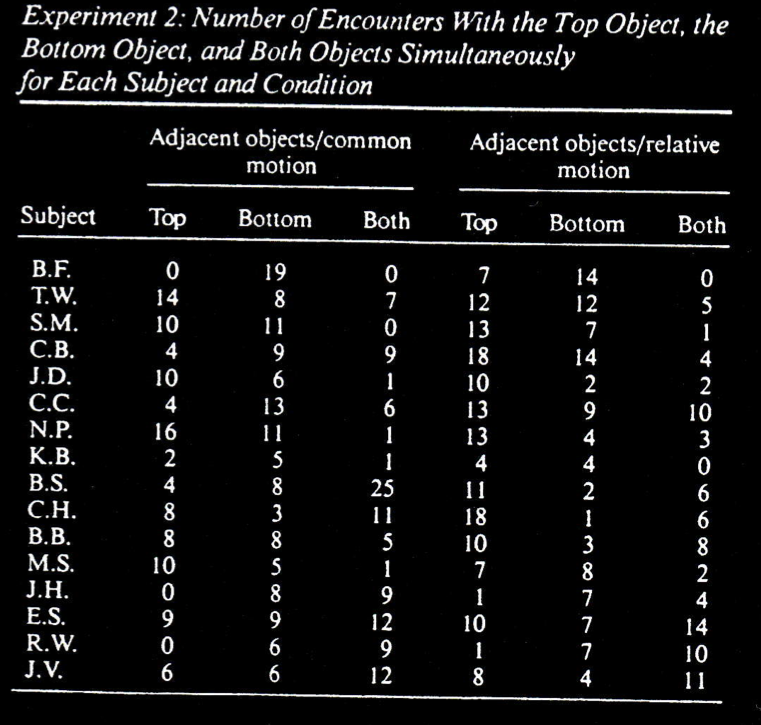
Spelke et al 1989 table 2.
Principles of Object Perception
- cohesion—‘two surface points lie on the same object only if the points are linked by a path of
connected surface points’
- boundedness—‘two surface points lie on distinct objects only if no path of connected surface points
links them’
- rigidity—‘objects are interpreted as moving rigidly if such an interpretation exists’
- no action at a distance—‘separated objects are interpreted as moving independently of one another if such an
interpretation exists’
(Spelke 1990)
Three Questions
1. How do four-month-old infants model physical objects?
2. What is the relation between the model and the infants?
3. What is the relation between the model and the things modelled (physical objects)?
Marr & Chomsky
‘... the vocabulary in which Chomsky frames linguistic issues is explicitly epistemological. Thus, the grammar of a language specifies what its speaker/hearers have to know ... and the goal of the child’s language acquisition process is to construct a theory of the language that correctly expresses this grammatical knowledge.’
Fodor 2000, p. 11
the simple view
‘objects are conceived: Humans come to know about an object’s unity, boundaries, and persistence in ways like those by which we come to know about its material composition or its market value’
Spelke (1988, p. 198)
Uncomplicated Account of Minds and Actions
For any given proposition [There’s a spider behind the book] and any given human [Wy] ...
1. Either Wy knows that there’s a spider behind the book, or she does not.
2. Either Wy can act for the reason that there is, or seems to be, a spider behind the book (where this is her reason for acting), or else she cannot.
3. The first alternatives of (1) and (2) are either both true or both false.
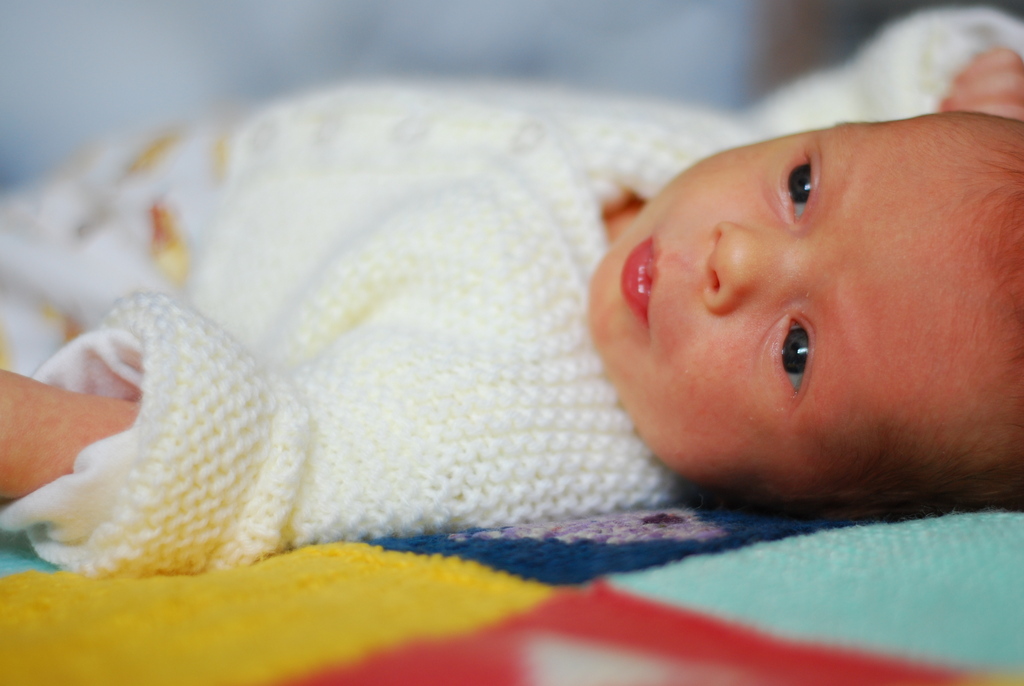
Permanence
objects
have boundaries
persist through time
causally interact
knowledge of objects
involves
segmenting them
representing them as perstising
tracking their causal interactions
Object permanence:
the ability to know things about, or represent, objects you aren't currently perceiving.
‘young infants’ physical world, like adults’, includes both visible [perceived] and hidden objects’
(Wang et al 2004, p. 194)
principle of continuity---
an object traces exactly one connected path over space and time
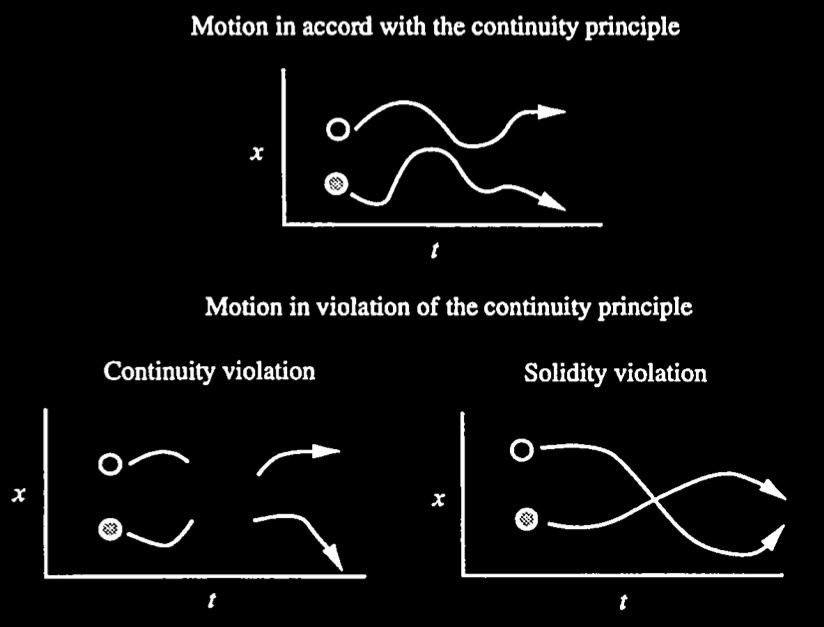
Spelke et al (1995, figure 1)

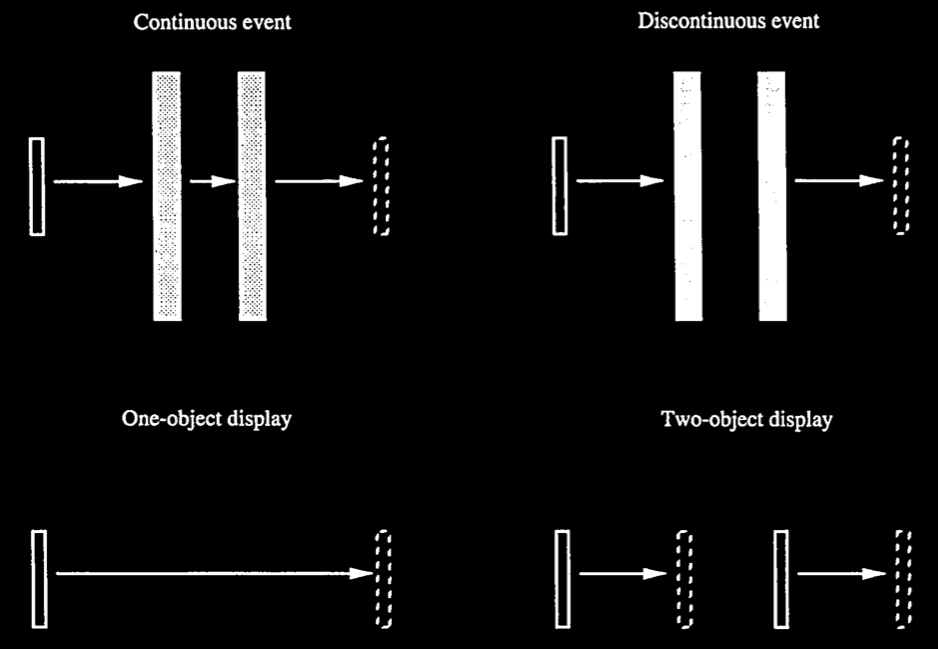
Spelke et al (1995, figure 2)

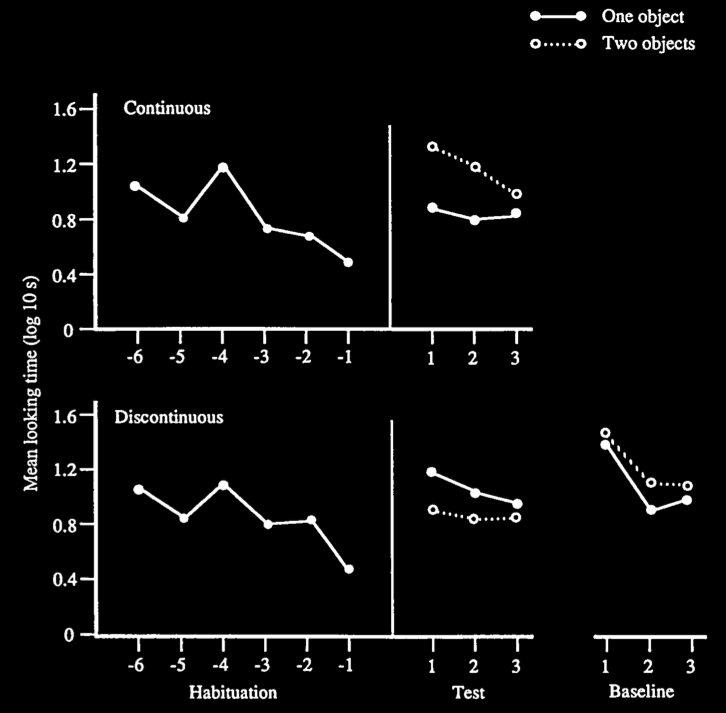
Spelke et al (1995, figure 3)


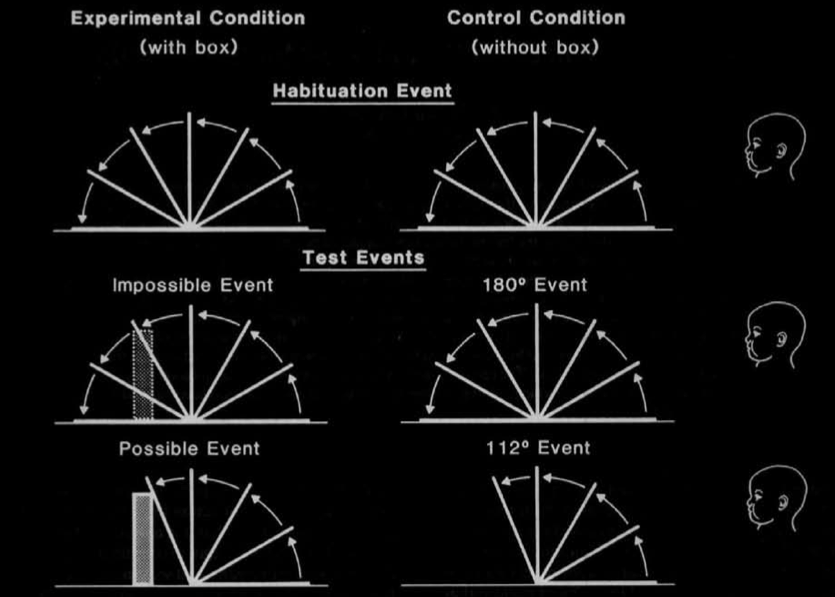


Baillargeon et al (1987, figure 1)

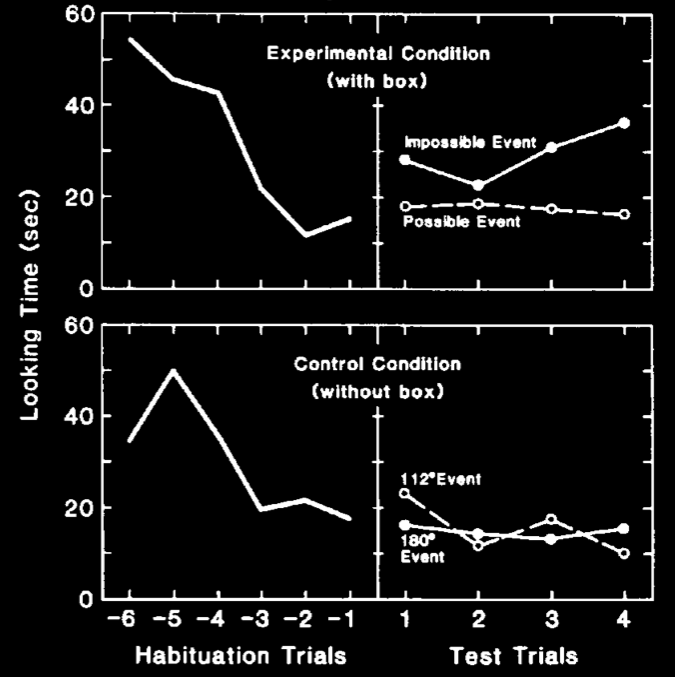

source: Baillargeon et al (1987, figure 2)
fail?
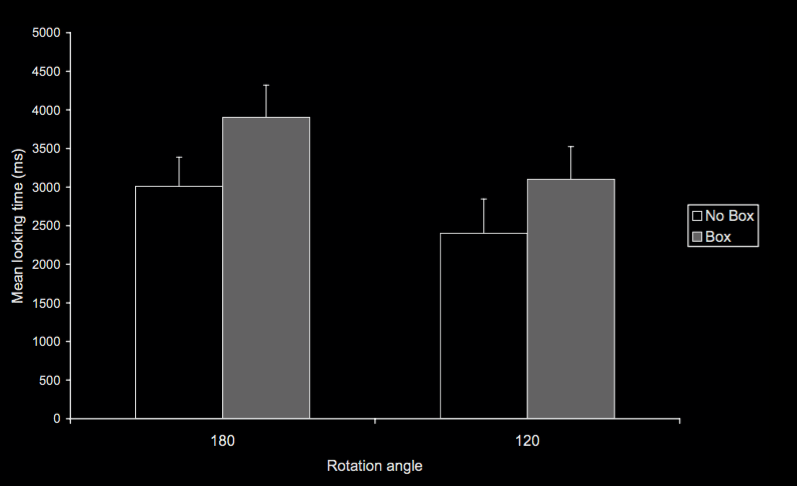
Sirois & Jackson 2012, figure 3
So Baillargeon’s drawbridge study doesn’t demonstrate object permanence?
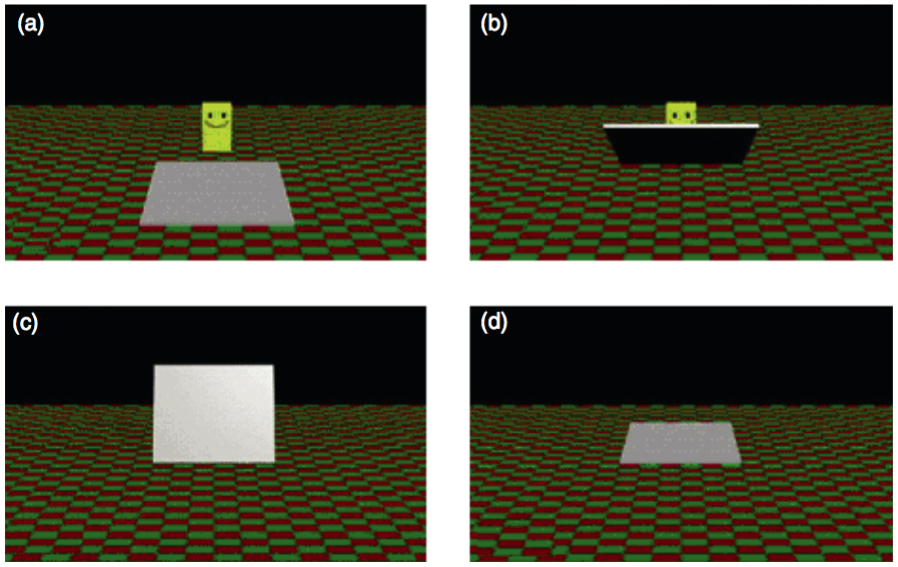
Sirois & Jackson 2012, figure 1
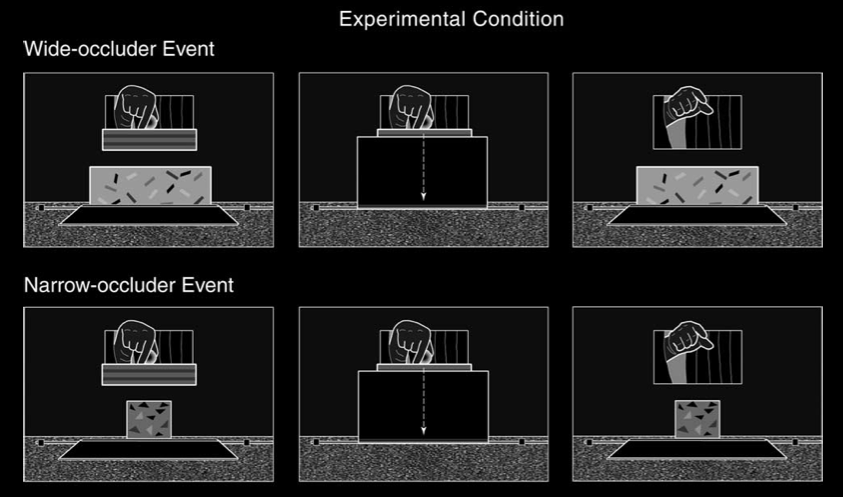

Wang et al (2004, figure 1)
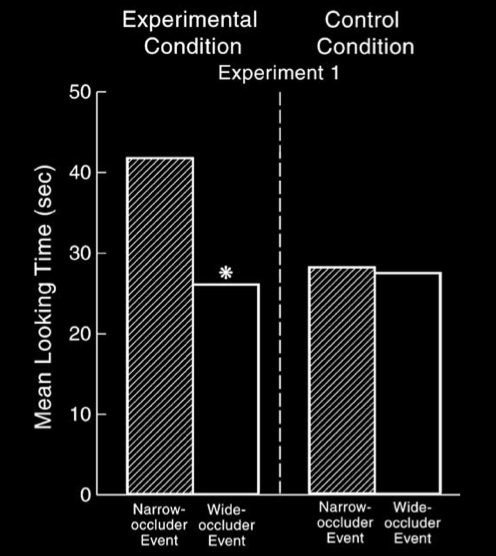
Wang et al (2004, figure 2)
Control condition
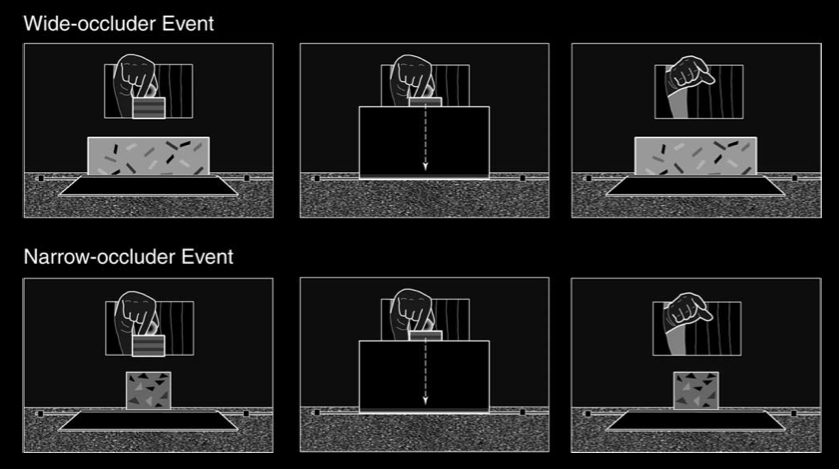
Wang et al (2004, figure 1)
Experimental condition

Wang et al (2004, figure 1)
Control condition

Wang et al (2004, figure 1)

Wang et al (2004, figure 2)
4- and 5-month-olds can track briefly occluded objects
| scenario | method | source |
| 1 vs 2 objects | habituation | Spelke et al 1995 |
| one unperceived object constrains another’s movement | habituation | Baillargeon 1987 |
| where did I hide it? | violation-of-expectations | Wilcox et al 1996 |
| wide objects can’t disappear behind a narrow occluder | violation-of-expectations | Wang et al 2004 |
| when and where will it reappear? | anticipatory looking | Rosander et al 2004 |
principles of object perception
{
segmentation
permanence
... (?)
Three Questions
1. How do four-month-old infants model physical objects?
2. What is the relation between the model and the infants?
3. What is the relation between the model and the things modelled (physical objects)?
‘evidence that infants look reliably longer at the unexpected than at the expected event is taken to indicate that they
‘(1) possess the expectation under investigation;
‘(2) detect the violation in the unexpected event; and
‘(3) are surprised by this violation.’
‘The term surprise is used here simply as a short-hand descriptor, to denote a state of heightened attention or interest caused by an expectation violation.’
(Wang et al 2004, p. 168)
‘To make sense of such results [i.e. the results from violation-of-expectation tasks], we … must assume that infants, like older learners, formulate … hypotheses about physical events and revise and elaborate these hypotheses in light of additional input.’
(Aguiar and Baillargeon 2002: 329).
principles of object perception
{
segmentation
permanence
... (?)
Object permanence is found in nonhuman animals including
- monkeys (Santos et al 2006)
\item monkeys \citep{santos:2006_cotton-top}
- lemurs (Deppe et al 2009)
\item lemurs \citep{deppe:2009_object}
- crows (Hoffmann et al 2011)
\item crows \citep{hoffmann:2011_ontogeny}
- dogs and wolves (Fiset et al 2013)
\item dogs and wolves \citep{fiset:2013_object}
- cats (Triana & Pasnak 1981)
\item cats \citep{triana:1981_object}
- chicks (Chiandetti et al 2011)
\item chicks \citep{chiandetti:2011_chicks_op}
- dolphins (Jaakkola et al 2010)
\item dolphins \citep{jaakkola:2010_what}
- ...
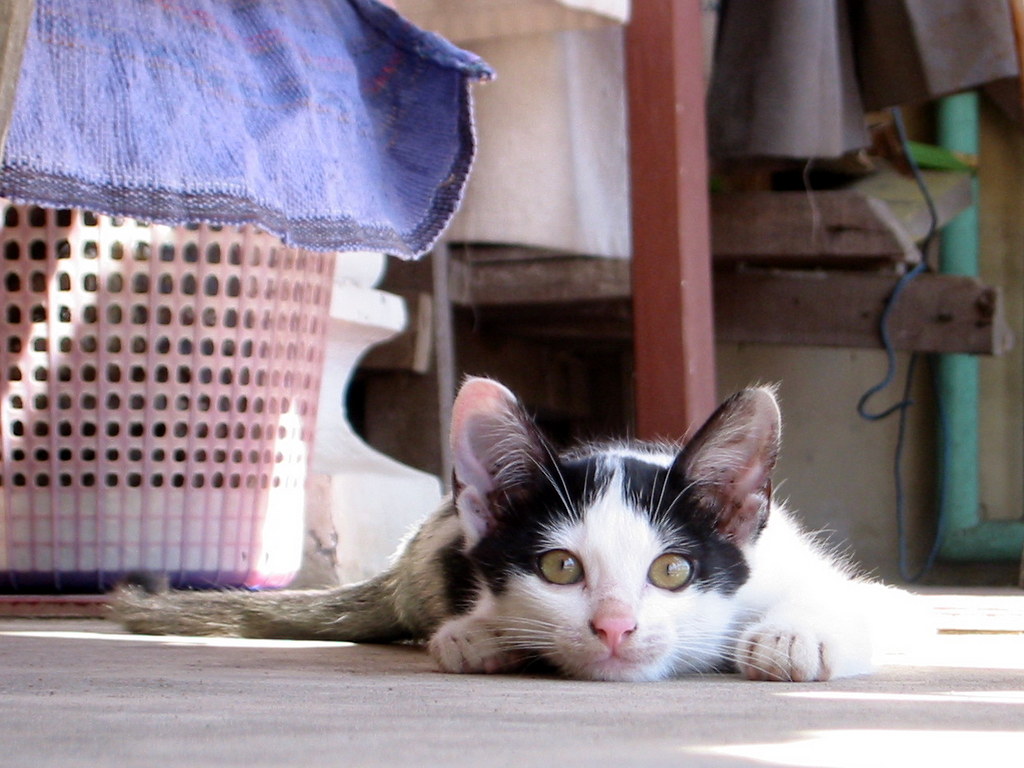
‘The real difficulty is that there is no reward for the great majority of cats in retrieving an unmoving, silent, odor-free, covered-up object from which their attention has been distracted, and hence the cats will not show that they know where it is.’
(Triana & Pasnak 1981, p. 138)

Causal Interactions
objects
have boundaries
persist through time
causally interact
knowledge of objects
involves
segmenting them
representing them as perstising
tracking their causal interactions
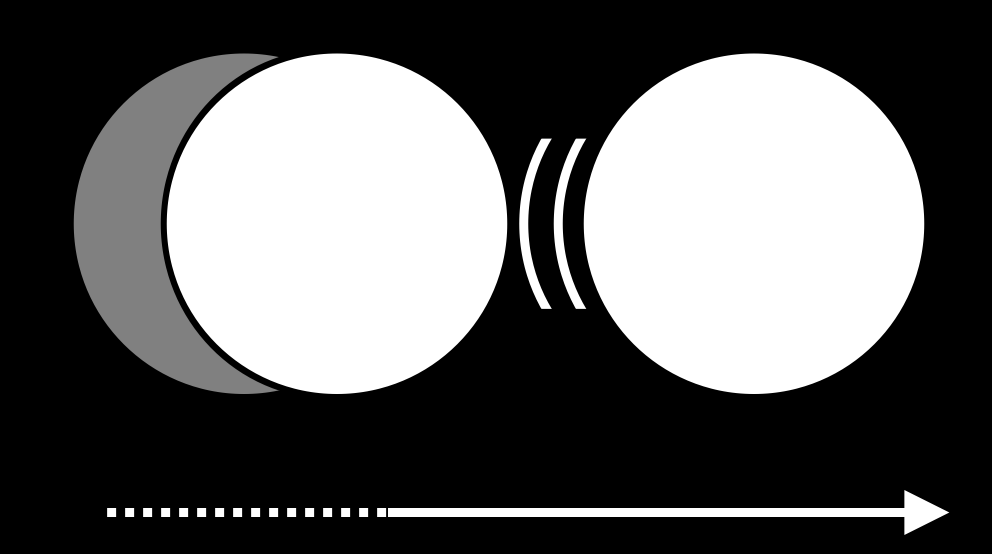
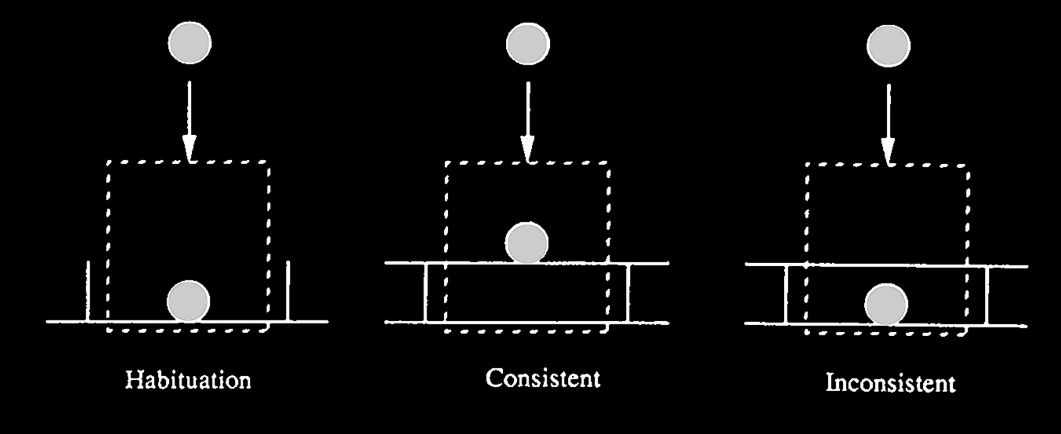
Spelke et al 1992, figure 2
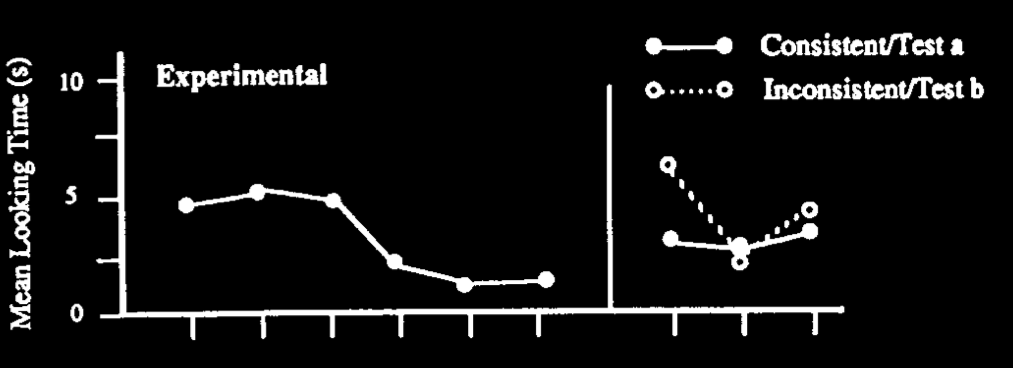
Spelke et al 1992, figure 3
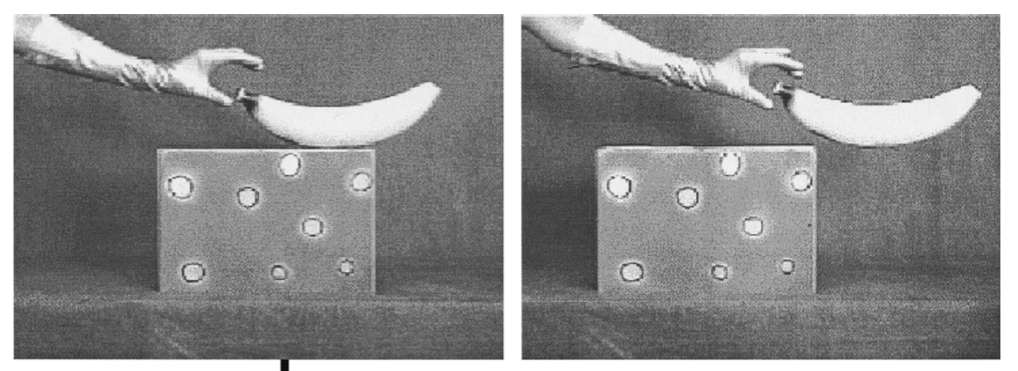
Cacchione & Krist 2004, figure 2
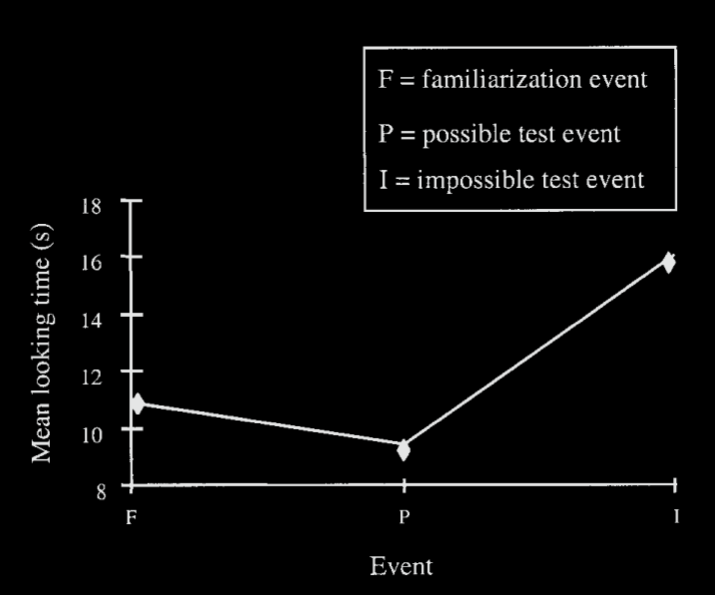
Cacchione & Krist 2004, figure 3

Kundey et al 2010, figure 1
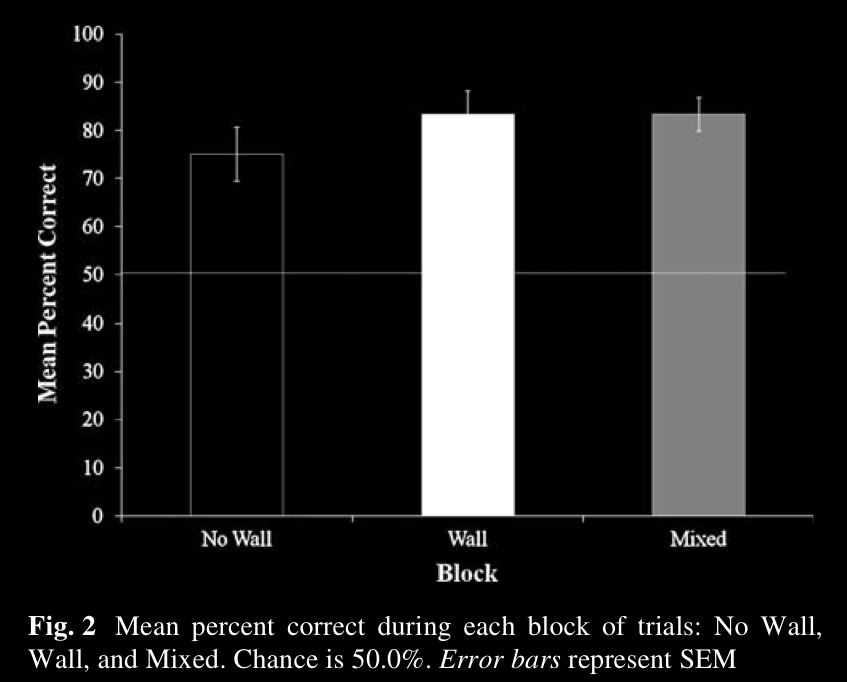
Kundey et al 2010, figure 2
how?

Spelke et al (1995, figure 1)

Spelke et al 1992, figure 2

Spelke et al (1995, figure 1)
‘object perception reflects basic constraints on the motions of physical bodies …’
(Spelke 1990: 51)
‘A single system of knowledge … appears to underlie object perception and physical reasoning’
(Carey and Spelke 1994: 175)

Recap and Questions
Three requirements
- segment objects
- represent objects as persisting (‘permanence’)
- track objects’ interactions
Principles of Object Perception
- cohesion—‘two surface points lie on the same object only if the points are linked by a path of connected surface points’
- boundedness—‘two surface points lie on distinct objects only if no path of connected surface points links them’
- rigidity—‘objects are interpreted as moving rigidly if such an interpretation exists’
- no action at a distance—‘separated objects are interpreted as moving independently of one another if such an interpretation exists’
Spelke, 1990
three requirements, one set of principles
Three Questions
1. How do four-month-old infants model physical objects?
2. What is the relation between the model and the infants?
3. What is the relation between the model and the things modelled (physical objects)?